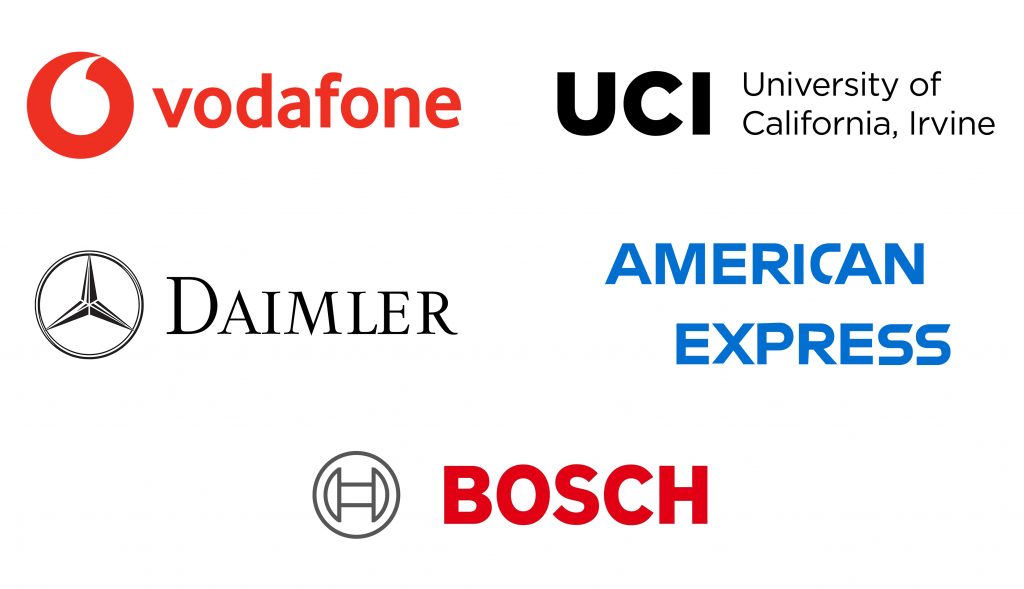How universities can create a virtual IT helpdesk with chatbots
May 17th, 2020 – 1 PM MDT
TRUSTED BY 500+ GLOBAL BRANDS

TRUSTED BY 500+ GLOBAL BRANDS

If you’ve ever worked in IT support, you know that organizations across the world waste a massive amount of time resolving repetitive queries that don’t require a trained IT support professional to solve. Every single day, IT support staff spend hours completing simple tasks like resetting a password or adding an email account to a work cell phone.
The end result is an IT support system that is plagued by slow response time and a reputation for inefficiency.
The root cause of this problem is a lack of resources. IT employees could answer all inquiries, repetitive or complex, in a timely manner if they had unlimited staffing potential. Yet organizations, public and private, don’t have the resources to fill this scarcity. The internet was supposed to solve this problem by offering instant and cheap information, but users have proven time and time again that existing IT knowledge bases are hard to digest, have low success rates when it comes to answering queries, and inevitably result in the creation of a support ticket anyway.
We propose an alternative solution: an AI agent that fields basic/repetitive queries with consistency and without a queue time for instant self-service.
The Problem
Government organizations across all spectrums struggle to acquire the necessary resources to function at full potential. A perfect storm of budget restrictions and the high cost of hiring, training, paying and replacing staff ensure that government IT departments are perennially understaffed, overworked and have a high turnover rate. Add the guaranteed loss in productivity associated with answering the mundane, repetitive queries for hours in a day and the problem gets even worse.
IT knowledge bases were supposed to be the silver bullet to solve this human resource crunch, but they have fallen short in a number of ways
IT falls inside a unique use case where the demographics of technology users span a multi-generational audience. Users in their sunset years are often overwhelmed by new technological processes while the newest generation of workers can pick up tech tasks with relative ease. However, all users, young and old, still require assistance when interacting with even the simplest tech at least the first time. The internet and the rise of knowledge bases marked forward progress in self-help solutions. However, they have fallen short in a number of ways:
- Large chunks of text are hard to digest, and they become even more difficult to understand as the subject moves into the more technical territory.
- Explaining steps in a process and addressing various conditions that can affect the outcome of the process has incredibly low retention and overall success rates. For example, what if a user needs to determine if condition A applies to them or condition B, and based on that condition they need to determine between two more conditions to find the correct instructions to be successful? In a traditional knowledge base, you would have to explain that the user has two choices, and based on that choice they have two more choices to find the correct process. And then they will need to successfully follow the instructions to solve their problem. All conditions and outcomes are displayed on the same page forcing the user to regard some text while attempting to disregard other areas that don’t apply. Talk about exhausting!
- Static displays of information are unengaging and overwhelming. Like the scenario presented above, static knowledge bases rarely react to user input or create an engaging space for the user to interact to identify their personal needs.
The Solution
Chatbots are automated support agents that can help users troubleshoot repetitive queries without generating a support ticket. Think of them as a filter layer between your support team and users that can weed out all the basic queries while passing along all of the niche queries that require a skilled professional. This approach has five primary advantages over existing options:
- Since the chatbot is completely automated, it will be able to handle millions of concurrent conversations and respond to users promptly and courteously regardless of the time of day.
- Since most people today are accustomed to texting their family and friends on apps like iMessage and WhatsApp, the learning curve for using our bots is practically non-existent. Everyone will know how to interact with our chatbot. And everyone can. This ensures that our solution will be accessible to the diverse needs of the employees and stakeholders relying on an IT help desk.
- We have designed our chatbot-building tools in such a way that the bot can deploy directly to a website in a matter of minutes, as a stand-alone landing page deployed instantly or wrapped into a mobile app depending on the needs of your specific IT department.
- Our solution steps users through simple or complex processes with an on-the-rails approach that can guide users to alternative paths based on dynamic conditions. Now, when a user selects a condition, the chatbot sends them down the correct path based on their specific needs. Even complicated processes that rely on multiple conditions to be met are handled with quick consistency and accurate outcomes. Most importantly, this helps cut down the amount of text on the page and reduces the cursory speed reading that often results in unnecessary tickets.
- Our bot allows users to rate their experience and, upon completion of a conversation, immediately send an email report to the development and support teams as well as designated government employees. Coupled with our powerful data analytics engine (built in-house), these reports will serve as a digital feedback management system that allows an IT department and our success team to closely monitor user experience, anticipate user needs, and rapidly adapt the bot’s knowledge base accordingly. We can even integrate ticketing solutions and/or integrate with a CRM, for further
For your consideration, you can preview our automated IT help desk platform here
Bottom Line
We can work with any IT department to identify repetitive queries and implement a web-based chatbot capable of answering or assist users in a multitude of self-help services and procedures with a high success rate for resolution. With the chatbot handling repetitive queries, human agents can spend their time more efficiently addressing complex queries that actually require their specialized knowledge. Overall, our system will reduce requests for service and provide real-time results.
If you’ve ever worked in IT support, you know that organizations across the world waste a massive amount of time resolving repetitive queries that don’t require a trained IT support professional to solve. Every single day, IT support staff spend hours completing simple tasks like resetting a password or adding an email account to a work cell phone.
The end result is an IT support system that is plagued by slow response time and a reputation for inefficiency.
The root cause of this problem is a lack of resources. IT employees could answer all inquiries, repetitive or complex, in a timely manner if they had unlimited staffing potential. Yet organizations, public and private, don’t have the resources to fill this scarcity. The internet was supposed to solve this problem by offering instant and cheap information, but users have proven time and time again that existing IT knowledge bases are hard to digest, have low success rates when it comes to answering queries, and inevitably result in the creation of a support ticket anyway.
We propose an alternative solution: an AI agent that fields basic/repetitive queries with consistency and without a queue time for instant self-service.
The Problem
Government organizations across all spectrums struggle to acquire the necessary resources to function at full potential. A perfect storm of budget restrictions and the high cost of hiring, training, paying and replacing staff ensure that government IT departments are perennially understaffed, overworked and have a high turnover rate. Add the guaranteed loss in productivity associated with answering the mundane, repetitive queries for hours in a day and the problem gets even worse.
IT knowledge bases were supposed to be the silver bullet to solve this human resource crunch, but they have fallen short in a number of ways
IT falls inside a unique use case where the demographics of technology users span a multi-generational audience. Users in their sunset years are often overwhelmed by new technological processes while the newest generation of workers can pick up tech tasks with relative ease. However, all users, young and old, still require assistance when interacting with even the simplest tech at least the first time. The internet and the rise of knowledge bases marked forward progress in self-help solutions. However, they have fallen short in a number of ways:
- Large chunks of text are hard to digest, and they become even more difficult to understand as the subject moves into the more technical territory.
- Explaining steps in a process and addressing various conditions that can affect the outcome of the process has incredibly low retention and overall success rates. For example, what if a user needs to determine if condition A applies to them or condition B, and based on that condition they need to determine between two more conditions to find the correct instructions to be successful? In a traditional knowledge base, you would have to explain that the user has two choices, and based on that choice they have two more choices to find the correct process. And then they will need to successfully follow the instructions to solve their problem. All conditions and outcomes are displayed on the same page forcing the user to regard some text while attempting to disregard other areas that don’t apply. Talk about exhausting!
- Static displays of information are unengaging and overwhelming. Like the scenario presented above, static knowledge bases rarely react to user input or create an engaging space for the user to interact to identify their personal needs.
The Solution
Chatbots are automated support agents that can help users troubleshoot repetitive queries without generating a support ticket. Think of them as a filter layer between your support team and users that can weed out all the basic queries while passing along all of the niche queries that require a skilled professional. This approach has five primary advantages over existing options:
- Since the chatbot is completely automated, it will be able to handle millions of concurrent conversations and respond to users promptly and courteously regardless of the time of day.
- Since most people today are accustomed to texting their family and friends on apps like iMessage and WhatsApp, the learning curve for using our bots is practically non-existent. Everyone will know how to interact with our chatbot. And everyone can. This ensures that our solution will be accessible to the diverse needs of the employees and stakeholders relying on an IT help desk.
- We have designed our chatbot-building tools in such a way that the bot can deploy directly to a website in a matter of minutes, as a stand-alone landing page deployed instantly or wrapped into a mobile app depending on the needs of your specific IT department.
- Our solution steps users through simple or complex processes with an on-the-rails approach that can guide users to alternative paths based on dynamic conditions. Now, when a user selects a condition, the chatbot sends them down the correct path based on their specific needs. Even complicated processes that rely on multiple conditions to be met are handled with quick consistency and accurate outcomes. Most importantly, this helps cut down the amount of text on the page and reduces the cursory speed reading that often results in unnecessary tickets.
- Our bot allows users to rate their experience and, upon completion of a conversation, immediately send an email report to the development and support teams as well as designated government employees. Coupled with our powerful data analytics engine (built in-house), these reports will serve as a digital feedback management system that allows an IT department and our success team to closely monitor user experience, anticipate user needs, and rapidly adapt the bot’s knowledge base accordingly. We can even integrate ticketing solutions and/or integrate with a CRM, for further
For your consideration, you can preview our automated IT help desk platform here
Bottom Line
We can work with any IT department to identify repetitive queries and implement a web-based chatbot capable of answering or assist users in a multitude of self-help services and procedures with a high success rate for resolution. With the chatbot handling repetitive queries, human agents can spend their time more efficiently addressing complex queries that actually require their specialized knowledge. Overall, our system will reduce requests for service and provide real-time results.
About the speakers

About the speakers

